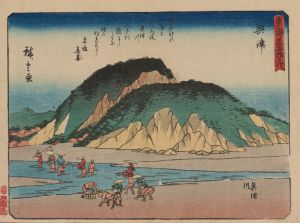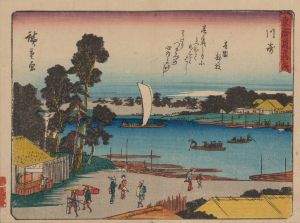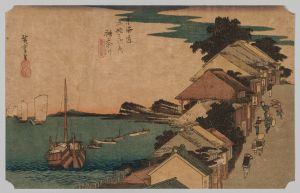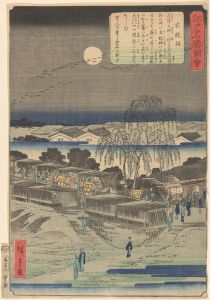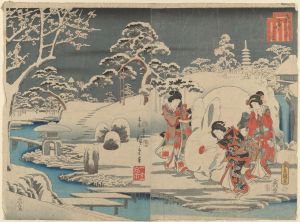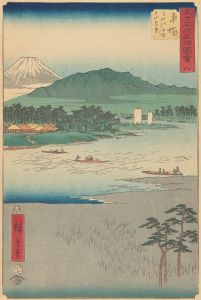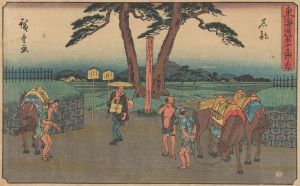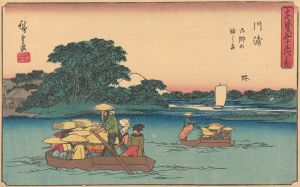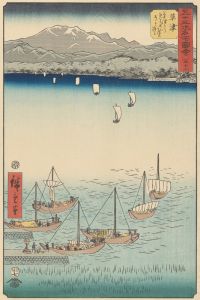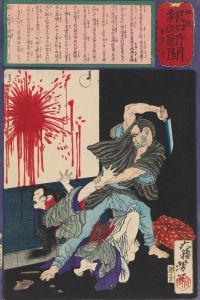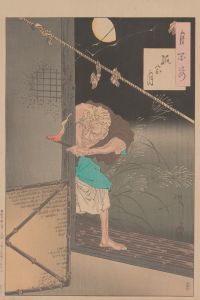
Mitsuke
A hand-painted replica of Andō Hiroshige’s masterpiece Mitsuke, meticulously crafted by professional artists to capture the true essence of the original. Each piece is created with museum-quality canvas and rare mineral pigments, carefully painted by experienced artists with delicate brushstrokes and rich, layered colors to perfectly recreate the texture of the original artwork. Unlike machine-printed reproductions, this hand-painted version brings the painting to life, infused with the artist’s emotions and skill in every stroke. Whether for personal collection or home decoration, it instantly elevates the artistic atmosphere of any space.
Andō Hiroshige, a prominent Japanese ukiyo-e artist of the Edo period, is renowned for his landscape prints and his ability to capture the essence of Japan's natural beauty. One of his notable works is "Mitsuke," which is part of the series "The Fifty-three Stations of the Tōkaidō" (Tōkaidō Gojūsan-tsugi no Uchi). This series, created between 1833 and 1834, is among Hiroshige's most famous and depicts the various stations along the Tōkaidō road, a vital route connecting Edo (modern-day Tokyo) to Kyoto.
"Mitsuke" is the 29th station in this series and is known for its depiction of the crossing of the Tenryū River. The Tōkaidō road was a well-traveled path during the Edo period, used by feudal lords, samurai, merchants, and travelers. Hiroshige's series captures the diverse landscapes and scenes encountered along this journey, providing a visual narrative of the travel experience during that era.
In the "Mitsuke" print, Hiroshige illustrates a scene where travelers are crossing the river, which was a significant and sometimes challenging part of the journey. The Tenryū River, known for its strong currents, required travelers to use boats or be carried across by porters. Hiroshige's depiction is both practical and artistic, showing the travelers in mid-crossing, with the river's expanse and the distant landscape creating a sense of movement and space.
Hiroshige's use of color and composition in "Mitsuke" is characteristic of his style. He employs a harmonious palette that captures the natural light and atmosphere of the scene. The print reflects Hiroshige's skill in conveying the transient beauty of nature and the human experience within it. His attention to detail and ability to evoke emotion through landscape are evident in this work, as in many others in the Tōkaidō series.
The "Fifty-three Stations of the Tōkaidō" series was highly popular in Hiroshige's time and remains influential today. It not only showcases Hiroshige's artistic talent but also provides historical insight into the Edo period's travel culture and the significance of the Tōkaidō road. The series has inspired countless artists and continues to be celebrated for its aesthetic and cultural value.
Hiroshige's "Mitsuke" print, like the rest of the series, is a testament to his mastery of the ukiyo-e genre and his ability to capture the spirit of a journey. Through his work, Hiroshige offers a window into the past, allowing contemporary audiences to experience the landscapes and life of Edo-period Japan. His prints are not only works of art but also historical documents that preserve the memory of a bygone era.






